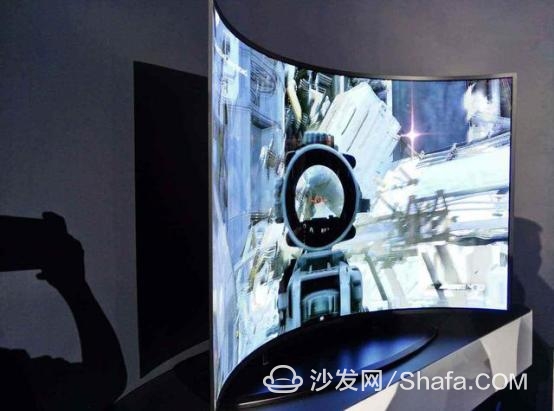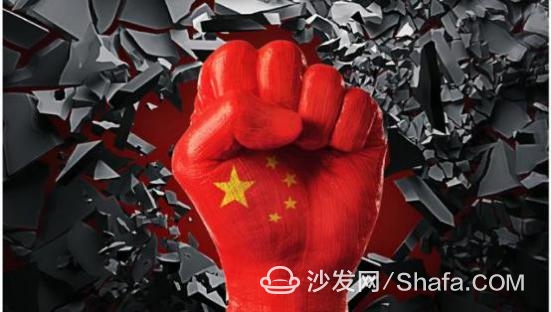According to foreign media reports, Samsung Display is planning to start using OLED screens for its tablets to replace LCDs. It is predicted that Samsung Display will eventually use OLED screens for the entire tablet PC product line, and Samsung Electronics has decided to use OLED screens for tablet computers and notebook computers released this year. In addition, Samsung Display began supplying OLED screens for Apple's new iPhone 8 in the first half of this year. Obviously, the supply of small and medium-sized OLED screens will be tighter.

In fact, Apple and Samsung will use OLED screens for their new phones this year, so nearly 80% of the panels on the market will be eaten by them. Therefore, this year's AMOLED screen will be in short supply, which has also led to Huawei's total smartphone production this year, only 8% will be equipped with AMOLED panels. What is even more worrying is that this situation is not easy for Huawei, and the situation of many mobile phone manufacturers may be even worse. However, OLED screens are indispensable as a change in quality. In the list of mobile phone companies adopting OLED screens, domestic OPPO, vivo, Huawei, and Xiaomi have long been on the list. But anxiety for domestic machine manufacturers is the shortage of panels and Samsung's monopoly on OLED screens. How to break the board has become an urgent issue for all domestic machine manufacturers.
Faced with the shortcomings of the electronics industry, domestic panel makers have already begun to catch up and began to focus on large-scale investment in the OLED panel used by smartphones. Six major Chinese companies, such as BOE, China Star Optoelectronics, Tianma Microelectronics, Hehui Optoelectronics, Kunshan Guoxian and Rouyu Technology, have successively established new factories to break the monopoly position of Korean companies. Among them, Huiguang and BOE have begun shipments in small quantities to supply domestic mobile phone manufacturers. It is worth noting that Tianma Microelectronics also displayed the newly developed flexible OLED display at MWC2017, which is expected to ship in the second half of this year. In addition, Chinese mobile phone manufacturers are aware of this, so they have begun to enter the field of OLED display. It may be because of the loss of Samsung's supply chain that was stuck, and Huawei has spared no effort to enter the field of OLED display.

Recently, it was reported that Huawei and its domestic panel maker BOE "have successfully produced OLED screens jointly developed by the company". Its performance is even better than that of Samsung and its service life is longer. However, Huawei and BOE officials did not disclose relevant information. However, in Xiaobian's opinion, Huawei is not without the motivation and possibility of entering the panel area.
Compared to traditional LCD screens, OLED technology has significant energy consumption advantages. Coupled with the characteristics of flexibility, thinness, and high color gamut, OLED's inherent natural features make terminal devices more colorful and diverse. Therefore, OLED has become the first choice for the replacement of smart phone display technology, and has become the standard for many high-end mobile phones. But also because Korean manufacturers such as Samsung occupy the absolute share in the global OLED market, the problem that this kind of situation brings is the high risk, there are no waiting for resources, also cause the Samsung OLED screen to be difficult to seek for high prices at one time. Therefore, Huawei obviously wants to solve the problem that the mobile display panel supply chain is stuck.
In addition, Huawei is now seizing the opportunity to open up the "full scene." Huawei believes that in the next decade, the era of intelligent terminal full-scale scenarios will come and begin around the full scene of work and life. Therefore, it is highly probable that Huawei will expand into peripheral projects such as watches, televisions, and smart homes. OLED screens are regarded as the next-generation display technology. Huawei, of course, also wants to grasp it. It can provide screen sources for smart terminals, and secondly, it has built a closed-loop private industry chain to expand its competitiveness.

OLED screen is regarded as the research and development node of the next generation of smart phones and is the future development trend. Therefore, major smartphone manufacturers and panel makers have invested heavily in R&D. With the continuous efforts of Chinese manufacturers, the shortcomings of domestic mobile phones on OLED screens will be resolved. It is no longer necessary to look at the faces of Samsung and other Korean manufacturers. As a result, the mobile phone industry is getting closer to being a truly self-sufficient Chinese manufacturer. step. In fact, in Xiaobian's view, do a good job in technology research and development, master core technology patents, have their own production capacity and supply, will not be stuck in the international giants, just like the current OLED screen supply. Although the cooperation between Huawei and BOE has not yet been confirmed, but because of the success of panel makers such as BOE, it also announced that China has bid farewell to the era of “core lack of screenâ€. The Chinese OLED industry with independent research and development and production capabilities will usher in a new pattern. In the end, Xiao Bian just wanted to say: There is not much time left for Korean manufacturers, domestic production continues to refuel! Smart TV / box information can focus on smart TV information network sofa butler (http://), the country is very influential Powerful TV boxes and smart TV websites provide information, communication, and Q&A on TV boxes, smart TVs, and smart TV software.

In fact, Apple and Samsung will use OLED screens for their new phones this year, so nearly 80% of the panels on the market will be eaten by them. Therefore, this year's AMOLED screen will be in short supply, which has also led to Huawei's total smartphone production this year, only 8% will be equipped with AMOLED panels. What is even more worrying is that this situation is not easy for Huawei, and the situation of many mobile phone manufacturers may be even worse. However, OLED screens are indispensable as a change in quality. In the list of mobile phone companies adopting OLED screens, domestic OPPO, vivo, Huawei, and Xiaomi have long been on the list. But anxiety for domestic machine manufacturers is the shortage of panels and Samsung's monopoly on OLED screens. How to break the board has become an urgent issue for all domestic machine manufacturers.
Faced with the shortcomings of the electronics industry, domestic panel makers have already begun to catch up and began to focus on large-scale investment in the OLED panel used by smartphones. Six major Chinese companies, such as BOE, China Star Optoelectronics, Tianma Microelectronics, Hehui Optoelectronics, Kunshan Guoxian and Rouyu Technology, have successively established new factories to break the monopoly position of Korean companies. Among them, Huiguang and BOE have begun shipments in small quantities to supply domestic mobile phone manufacturers. It is worth noting that Tianma Microelectronics also displayed the newly developed flexible OLED display at MWC2017, which is expected to ship in the second half of this year. In addition, Chinese mobile phone manufacturers are aware of this, so they have begun to enter the field of OLED display. It may be because of the loss of Samsung's supply chain that was stuck, and Huawei has spared no effort to enter the field of OLED display.

Recently, it was reported that Huawei and its domestic panel maker BOE "have successfully produced OLED screens jointly developed by the company". Its performance is even better than that of Samsung and its service life is longer. However, Huawei and BOE officials did not disclose relevant information. However, in Xiaobian's opinion, Huawei is not without the motivation and possibility of entering the panel area.
Compared to traditional LCD screens, OLED technology has significant energy consumption advantages. Coupled with the characteristics of flexibility, thinness, and high color gamut, OLED's inherent natural features make terminal devices more colorful and diverse. Therefore, OLED has become the first choice for the replacement of smart phone display technology, and has become the standard for many high-end mobile phones. But also because Korean manufacturers such as Samsung occupy the absolute share in the global OLED market, the problem that this kind of situation brings is the high risk, there are no waiting for resources, also cause the Samsung OLED screen to be difficult to seek for high prices at one time. Therefore, Huawei obviously wants to solve the problem that the mobile display panel supply chain is stuck.
In addition, Huawei is now seizing the opportunity to open up the "full scene." Huawei believes that in the next decade, the era of intelligent terminal full-scale scenarios will come and begin around the full scene of work and life. Therefore, it is highly probable that Huawei will expand into peripheral projects such as watches, televisions, and smart homes. OLED screens are regarded as the next-generation display technology. Huawei, of course, also wants to grasp it. It can provide screen sources for smart terminals, and secondly, it has built a closed-loop private industry chain to expand its competitiveness.

OLED screen is regarded as the research and development node of the next generation of smart phones and is the future development trend. Therefore, major smartphone manufacturers and panel makers have invested heavily in R&D. With the continuous efforts of Chinese manufacturers, the shortcomings of domestic mobile phones on OLED screens will be resolved. It is no longer necessary to look at the faces of Samsung and other Korean manufacturers. As a result, the mobile phone industry is getting closer to being a truly self-sufficient Chinese manufacturer. step. In fact, in Xiaobian's view, do a good job in technology research and development, master core technology patents, have their own production capacity and supply, will not be stuck in the international giants, just like the current OLED screen supply. Although the cooperation between Huawei and BOE has not yet been confirmed, but because of the success of panel makers such as BOE, it also announced that China has bid farewell to the era of “core lack of screenâ€. The Chinese OLED industry with independent research and development and production capabilities will usher in a new pattern. In the end, Xiao Bian just wanted to say: There is not much time left for Korean manufacturers, domestic production continues to refuel! Smart TV / box information can focus on smart TV information network sofa butler (http://), the country is very influential Powerful TV boxes and smart TV websites provide information, communication, and Q&A on TV boxes, smart TVs, and smart TV software.
Flash Ring Light,Ring Light Rgb,Camera Led Ring Light,Selfie Led Ring Flash Light
SHAOXING COLORBEE PLASTIC CO.,LTD , https://www.colorbeephoto.com